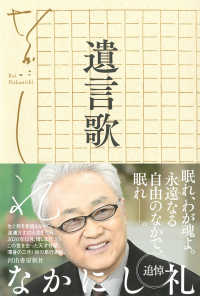Full Description
What does it mean to give life to movement? Tamara Williams answers this question through an ethnographic study and historical mapping of the Silvestre Dance Technique created by Brazilian master teacher, dancer, and choreographer, Rosangela Silvestre. In the first book solely dedicated to Silvestre Technique, Williams illustrates how the applied theory of the triangles of inspiration, expression and balance of training can lead to self-actualization through implementation in daily life practice.
From the Brazilian arts movements of the 1970s, to the sociopolitical themes of the Blocos Afros, to the global practice of Silvestre Technique presently, the author explores the impact of the Body Universe in understanding self-capacity and capability. Williams investigates the functionality of the technique through a series of interviews, physical practice, and training.
Contents
Table of Contents
Acknowledgments
Foreword by Lela Aisha Jones
Preface
Introduction
delete I. African-Brazilian Culture in the 1970s and the History of Silvestre Technique
deleteII. Creating Possibilities: An Approach to Silvestre Technique
III. Practicing the Technique
deleteIV. Conceptualizations of Silvestre Technique
delete V. Definition of Silvestre Terms and Positions
VI. Introductory Sequences for Silvestre Dance Technique Class
VII. Methodology and Pedagogy
VIII. Self-Actualization
Afterword
Appendix
Bibliography
Index








